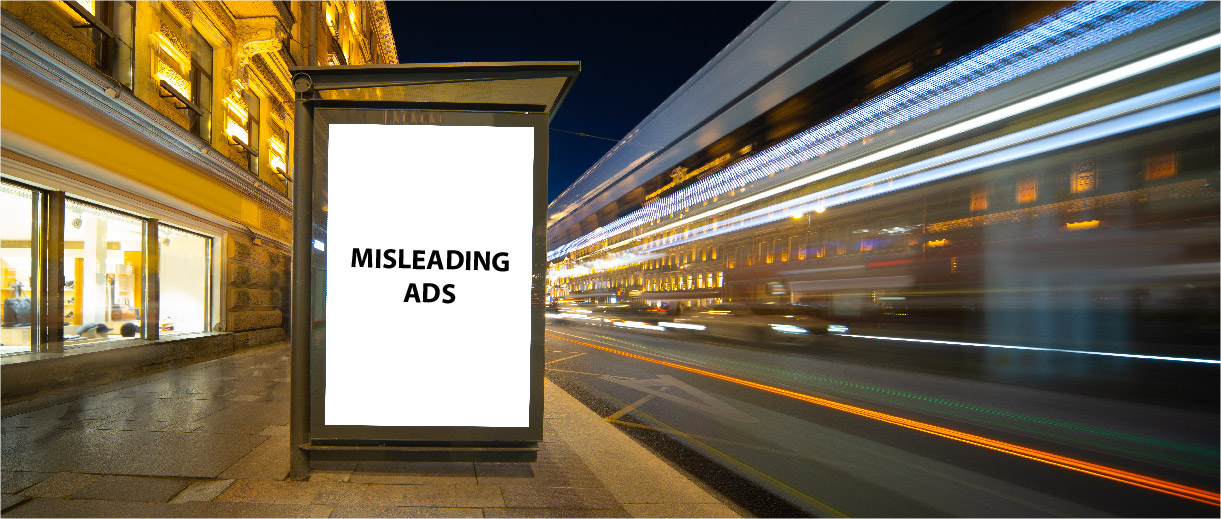
When was the last time you were baited by an advertisement into believing something was priced attractively only to discover that there was a catch to the purchase?, or you thought something was free or discounted, except that it really was not, and that was available only under limited circumstances? Misleading ads can be troublesome, sometimes even dangerous (in the case of children, for example), for consumers and regulators alike. To tackle this problem, the Central Consumer Protection Authority (CCPA), in June 2022, issued “Guidelines for Prevention of Misleading Advertisements and Endorsements for Misleading Advertisements, 2022” (Guidelines). These seek to curb false or misleading ads and safeguard naive consumers from becoming victims of such ads.
The Guidelines guide the advertising industry to be more transparent when publishing their ads, listing out the duties of various stakeholders, as also the due diligence to be carried out before endorsing. The goal is to enable consumers to make informed, fact-based decisions. This is aided through a taxonomy of false and misleading ads described in the Guidelines, and their treatment under law going forward.
The Guidelines are applicable to all ads published on all platforms, i.e., print, television and online. They also recognise the roles and responsibilities of the range of stakeholders in the ads ecosystem, including manufacturers, service providers, advertisers, advertising agencies, and endorsers. In efforts to be more relevant to contemporary consumer practices and behaviour, the Guidelines also embrace ads involving social media influencers; ads in the form of non-fungible tokens; ads in the metaverse; or pop-up or disappearing ads on the internet.
What are misleading ads?
The key provision under which the Guidelines have been issued is Section 2(28) of the Consumer Protection Act, 2019, which defines ‘misleading advertisement’ as follows:
“An advertisement, which in relation to any product or services — (i) falsely describes such product or service; or (ii) gives a false guarantee to, or is likely to mislead the consumers as to the nature, substance, quantity or quality of such product or service; or (iii) conveys an express or implied representation which, if made by the manufacturer or seller or service provider thereof, would constitute an unfair trade practice; or (iv) deliberately conceals important information”
The Guidelines list out positive requirements to be met in order for an ad to be considered valid and not misleading. Ads should:
- Include honest and truthful representation;
- Not mislead consumers by the product’s accuracy, scientific validity, practicality, capability, or service;
- Not present consumers rights as a distinctive feature of the offer;
- Ensure that claims are based solely on the content or subject matter of some publication;
- Not mislead consumers or suggest that claims are universally acknowledged if informed or scientific opinion is divided on the issue; and
- Comply with the relevant sector specific laws.
The Guidelines proceed to introduce definitions of, ‘bait advertisement’, ‘surrogate advertisement’, ‘advertiser’, ‘advertising agency’, ‘endorser’ and ‘service provider’.
Bait Ads
These are ads where goods and services are offered for sale at a low price to attract consumers. Such ads are not outrightly forbidden or banned. Instead, the Guidelines lay out conditions to be met before publishing such ads. Specifically:
- The product/service should be made available to the consumer at the price offered in the ad;
- There should be ample supply for the foreseeable demand when the ad is published, and if there is limited availability, it should be so indicated; and
- There should be no bait to purchase the product or service in the market.
Surrogate Ads
Surrogate ads, also called indirect ads, are banned. No ads can imply, directly or indirectly, that they are for the promotion of products or services whose advertising is prohibited or restricted by law. Bypassing such prohibitions by suggesting an ad is for promoting an unrestricted/unregulated product or service is specifically referenced.
Free Claim Ads
“Free claims” ads have also been tackled by the Guidelines, which contain a negative list of what cannot be considered “free” or “without charge”. Free claim ads are ordinarily expected to be those where the consumer merely acts in response to the ad and collects or pays for delivery of the item in question. Products or services cannot be described as “free” if the quality or quantity that the consumer must purchase to benefit from the offer has been cut down, or if the consumer must pay for packaging, packing, administration, or handling. A part of a package cannot be labelled as free if it is included in the price of packaging. The term “free trial” cannot be used to describe a “satisfaction or your money back” offer or an offer that requires a non-refundable purchase.
Children’s Targeted Ads
The Guidelines provide that ads involving children shall not, among other things:
- Encourage, condone, or imitate behaviour that could be dangerous for children, or be detrimental to their physical or mental health;
- Take advantage of inexperience, gullibility of children or their sense of loyalty;
- Exaggerate product/service features to make children have unrealistic expectations;
- Imply that children may be ridiculed or otherwise belittled if they do not purchase or make use of such goods;
- Feature sports, movie or other celebrities products/services which require a health warning or cannot be purchased by children; and
- Claim that consuming a product can enhance intelligence or physical ability.
The Guidelines also state that ads for junk foods cannot be advertised during childrens’ programming or on channels meant for children. Relatedly, ads cannot give the impression that the advertised goods are better than natural or traditional foods consumed by children.
Disclaimers in Ads
Disclaimers may expand or clarify ambiguities in a claim, but must not contradict or conceal the material claim or focal message of the ad, thus making the ad misleading or hiding its commercial objective. Disclaimers must not correct misleading claims in ads. Disclaimers must also be made in the same language as the ad, and must be clear, noticeable, and legible to a normally-sighted person reading from a practical distance and at a practical pace.
Duties of various stakeholders
The Guidelines enumerate certain duties of manufacturers, service providers, advertisers, and advertising agencies. Claims in ads are expected to be endorsed, corroborated, or supported by objectively ascertainable facts, and relevant parties may be called to produce such substantiation.
Stakeholders must ensure that ads do not reference persons or institutions so as to confer an unfair advantage on the product advertised or otherwise negatively affect the reputation of that person or institution, unless permission from those concerned has been obtained. This becomes particularly important in comparative advertising, where products from two different companies are compared while emphasising the benefits of one over the other.
Ads are expected to not abuse consumers’ trust or exploit their lack of experience or knowledge. Nevertheless, some relaxation in terms of evident exaggeration or fabrication that is clearly hyperbole or humour, and do not make an exact or deceptive claim, is permitted.
Due diligence before endorsements
The Guidelines necessitate due diligence must be undertaken before the endorsement of ads. Endorsements must not be deceiving and must exhibit the sincere belief of the individual or entity making such representation, and be based on sufficient information about or experience with the product or service.
Disclosures of material connection between the endorser and the advertiser that can affect credibility of the endorsement are also necessary. Thus, endorsers holding stakes in manufacturing entities or service providers must clearly disclose such connections in their ads.
Penalty
The penalty for false and misleading advertisements is provided under Section 21 of the Consumer Protection Act, 2019. A penalty of INR 10 to 50 lakh (~USD 12,500 to 62,500) can be imposed by the CCPA on manufacturers, advertisers, and endorsers for misleading ads. The CCPA can also prohibit the endorser of a misleading ad from future endorsements for up to three years.
Conclusion
The Guidelines have imposed stringent requirements on stakeholders to reduce misleading ads. Going forward, relevant stakeholders will need to be especially cautious while using terms such as “free,” “free trial,” and “without charge,” as well as making claims or misleading statements in their ads. Besides meeting the language, size, and manner requirements for disclaimers, stakeholders also need to ensure that endorsement agreements meet the Guidelines’ requirements. Keeping in mind the sensitive nature of the Guidelines, ads would have to be revised so as to not take advantage of an average consumer’s lack of knowledge or expertise, with a higher degree of caution for ads directed at children.
The Guidelines are ambitious and seek to match best practices in other jurisdictions. However, the sanctity, enforceability, and punitive nature of “guidance” in an industry that is otherwise substantially self-regulated is questionable. Sweeping definitions, vague directions, and prohibitive sanctions may result in over-monitoring and excessive regulation of ads. Is the industry prepared for this? Or will these Guidelines only free up a hornet’s nest of consumer protection-related litigation in the coming months? Only time will tell.
















